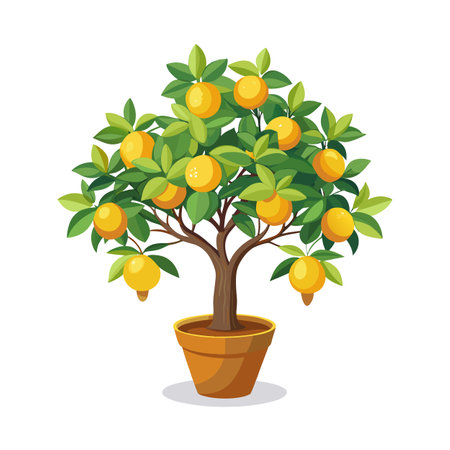Seasonal Pruning Tips
Proper pruning is one of the most important monthly duties for any American fruit gardener who wants to nurture a thriving, sustainable orchard. Timing is everything: winter and early spring are generally the best seasons for pruning most fruit trees, as they are dormant and less susceptible to disease. For apples, pears, and stone fruits like peaches or plums, prune before new growth emerges. Use clean, sharp tools to make precise cuts that reduce stress on the tree and limit waste. Eco-friendly techniques include composting your trimmings and avoiding chemical sealants—let nature do its work! Focus on removing dead or diseased branches first, then thin out crowded areas to improve air circulation and sunlight exposure. This not only supports healthy growth but also sets the stage for an abundant harvest later in the year. By integrating mindful, sustainable pruning practices into your monthly routine, you’re investing in both your garden’s productivity and the environment.
Organic Feeding Practices
Embracing organic feeding methods is a cornerstone of sustainable fruit gardening. By using locally sourced compost, natural mulch, and other eco-friendly amendments, you can nourish your fruit trees while reducing your environmental impact. Every month, it’s essential to review your soil’s health and provide the nutrients your garden needs without relying on synthetic fertilizers.
Compost: Nature’s Nutrient Booster
Compost is a powerful ally for any fruit garden. It recycles kitchen scraps, yard waste, and fallen leaves into nutrient-rich humus that improves soil structure and fertility. Apply a generous layer of mature compost around the base of each tree, taking care not to pile it against the trunk. This monthly routine ensures slow-release nutrition and supports beneficial soil organisms.
Mulching for Moisture and Protection
Mulch acts as a natural barrier that retains moisture, suppresses weeds, and adds organic matter as it breaks down. Opt for materials like wood chips, straw, or shredded leaves—preferably from local sources to minimize transportation emissions. Spread mulch in a doughnut shape under the tree canopy, maintaining a gap near the trunk to prevent rot.
Choosing Local Resources
Sourcing feeding materials locally helps reduce your carbon footprint and supports your community’s green initiatives. Many U.S. neighborhoods offer municipal compost programs or wood chip drop-offs. Farmers markets are also great places to find untreated straw or leaf mold.
Sustainable Feeding Options at a Glance
| Feeding Material | Main Benefit | Best Application Time | Local Sourcing Tip |
|---|---|---|---|
| Compost | Improves soil fertility & structure | Early spring & fall | Home compost bin or city program |
| Wood Chips Mulch | Retains moisture & prevents weeds | Year-round, refresh as needed | Tree trimming services or city yards |
| Straw Mulch | Adds organic matter & protects roots | Late spring after soil warms up | Local farms or farmers markets |
| Leaf Mold | Nutrient-rich slow-release feed | Fall application best | Your own raked leaves or neighbors |
Nurturing Your Garden—and the Planet
Sustainable feeding isn’t just about what you add—it’s about supporting the entire ecosystem beneath your trees. With thoughtful monthly practices and local resources, you’re growing fruit that’s better for you and better for the Earth.

3. Smart Netting for Wildlife Protection
Protecting your fruit garden from hungry birds and curious critters is a monthly must, but it’s equally important to keep the broader ecosystem in mind. Smart netting strategies allow you to safeguard your harvest without harming local wildlife or disrupting natural habitats. Instead of draping loose plastic netting—which can entangle birds, beneficial insects, or even small mammals—opt for wildlife-friendly options. Choose tightly woven, UV-stabilized nets with a mesh size small enough to keep out pests but large enough to let pollinators through. When installing, secure the netting snugly around the base of trees or raised beds, eliminating gaps that might trap animals. Consider using pop-up fruit cages or hoop tunnels as reusable alternatives that minimize waste and are easy to remove at season’s end.
Supporting biodiversity is about more than just protecting your own produce; it’s about fostering a healthy, balanced environment. Leave some fruit unnetted in a designated area to provide food for local wildlife, supporting species like songbirds and pollinators that contribute to long-term garden health. Always check nets regularly for any trapped creatures, and remove them promptly if found. By integrating smart netting practices into your fruit garden routine each month, you’re not just ensuring a bountiful harvest—you’re cultivating an ecosystem where people and nature thrive together.
4. Monitoring Soil Health
Keeping a close eye on your fruit garden’s soil health is essential to sustainable gardening and a bountiful harvest. In the U.S., where climate and soil types vary widely, regular soil testing is a best practice that helps gardeners maintain balanced, nutrient-rich conditions year round. By understanding your soil’s current state, you can make informed decisions about natural amendments rather than relying on synthetic fertilizers that may disrupt local ecosystems.
Why Test Your Soil?
Soil testing gives insight into pH levels, nutrient availability, and organic matter content—key factors for healthy fruit trees and shrubs. Knowing these details allows you to tailor your feeding practices and avoid common problems like nutrient deficiencies or toxic buildups.
Common Soil Amendments
| Amendment | Purpose | Sustainable Benefit |
|---|---|---|
| Compost | Adds organic matter & nutrients | Recycles waste; improves water retention |
| Mulch (wood chips, straw) | Regulates soil temperature & moisture | Reduces water use; suppresses weeds naturally |
| Rock Phosphate | Boosts phosphorus levels | Long-lasting; less runoff than synthetic sources |
| Lime or Sulfur | Adjusts pH levels | Makes nutrients more accessible without chemicals |
Monthly Soil Check Routine
- Test soil pH and nutrients at least twice a year—early spring and late fall are ideal.
- Add compost or mulch monthly as needed to replenish organic matter.
- Observe plant growth and leaf color for early signs of imbalance.
This mindful approach to soil health not only boosts your garden’s productivity but also supports the broader goal of environmental stewardship. By choosing natural amendments and regular monitoring, you help sustain the local ecosystem while enjoying healthier fruit harvests all season long.
5. Watering Wisely
When it comes to keeping your fruit garden flourishing, water is a precious resource—especially in regions across the U.S. where droughts can hit hard. This month, focus on adopting water-saving irrigation techniques that are tailored to your local climate. For example, folks in California or the Southwest might benefit from drip irrigation systems, which deliver water directly to the roots and minimize evaporation. In contrast, gardeners in the Pacific Northwest can often rely on natural rainfall but should still monitor soil moisture to avoid overwatering.
Whatever your region, its essential to water deeply but less frequently, encouraging roots to grow deeper and making your fruit trees more resilient during dry spells. Early morning is the best time to irrigate—this reduces evaporation and allows plants to absorb moisture before the heat of the day kicks in. Mulching around your trees with organic matter like wood chips or straw further conserves soil moisture and helps suppress weeds.
Investing in a rain barrel or a simple greywater system can also make a big difference, especially if you’re aiming for an eco-friendly orchard. By capturing and reusing water, you’ll not only reduce your environmental impact but also save on utility bills. Remember: wise watering is about working with nature’s rhythms and being mindful of every drop, ensuring your orchard thrives sustainably all season long.
6. Composting for a Greener Orchard
Integrating backyard composting into your fruit garden’s monthly care routine is an eco-smart move that supports both plant health and environmental stewardship. By composting fruit trimmings, fallen leaves, and organic kitchen scraps, you transform what would be waste into nutrient-rich soil amendments. This simple practice not only reduces landfill contributions but also closes the resource loop—making your orchard a model of zero-waste gardening.
Why Compost?
Composting diverts valuable organic matter from landfills, where it would otherwise produce methane, a potent greenhouse gas. Instead, you create a living, regenerative system in your own backyard. Finished compost enriches your soil with vital nutrients, improves moisture retention, and fosters beneficial microbial activity—helping your fruit trees flourish naturally without synthetic fertilizers.
Getting Started with Backyard Composting
Set up a compost bin or pile in a convenient spot near your fruit garden. Layer “greens” like fruit peels and veggie scraps with “browns” such as dry leaves and small pruned branches. Turn the pile regularly to aerate it and speed decomposition. In just a few months, you’ll have dark, crumbly compost ready to spread around tree bases or mix into planting holes as part of your monthly feeding regime.
Closing the Loop for Sustainability
By making composting a regular part of your orchard maintenance, you actively participate in a closed-loop system that mimics natural cycles—returning nutrients to the earth and reducing dependence on external inputs. It’s an empowering step toward a more resilient, regenerative, and sustainable fruit garden—one that feeds both your family and the planet.


